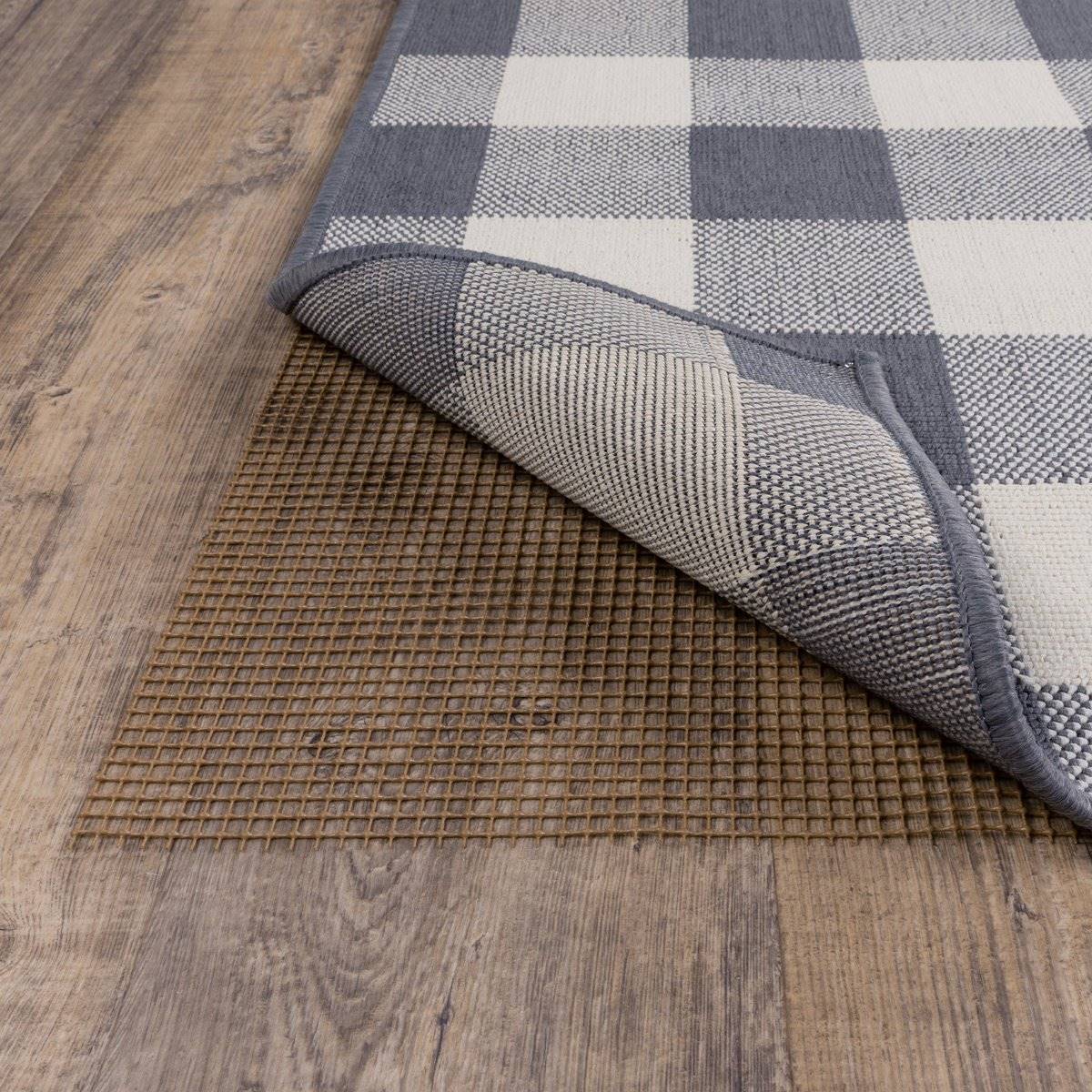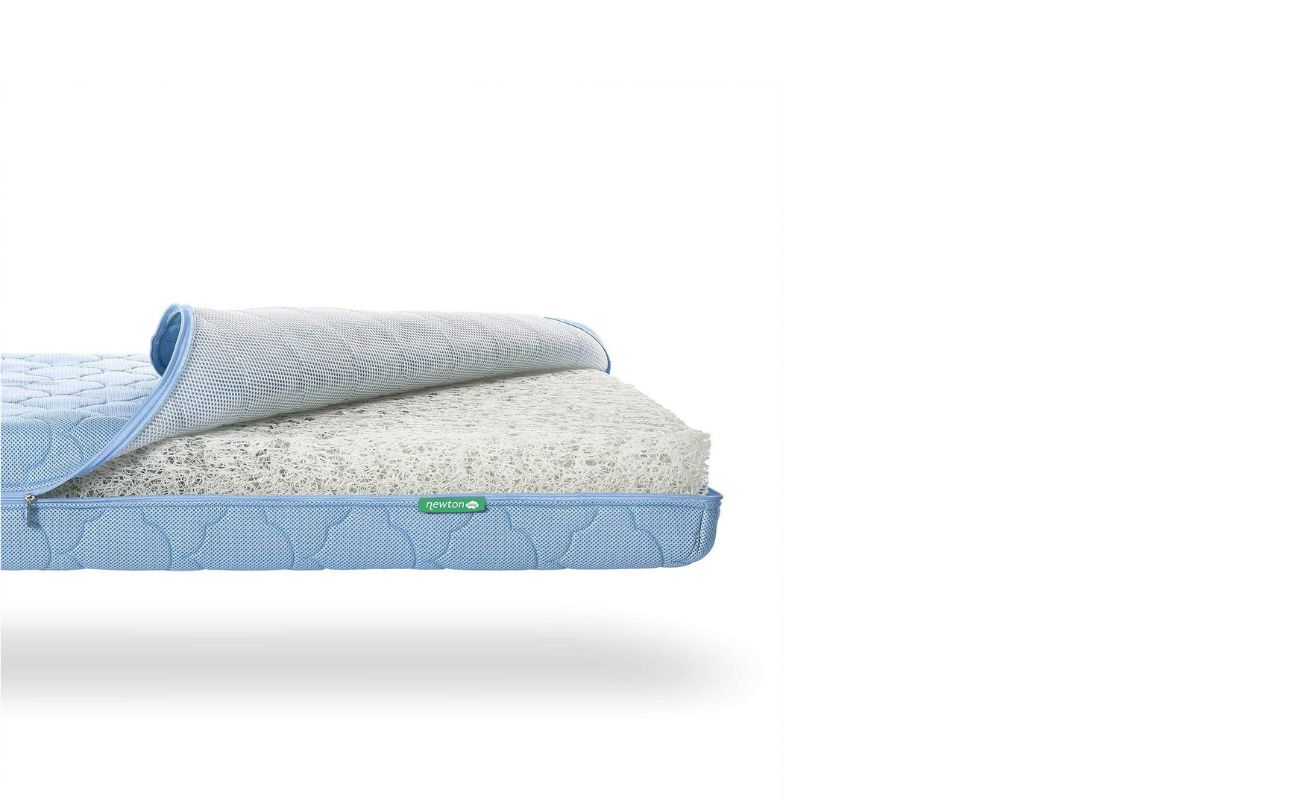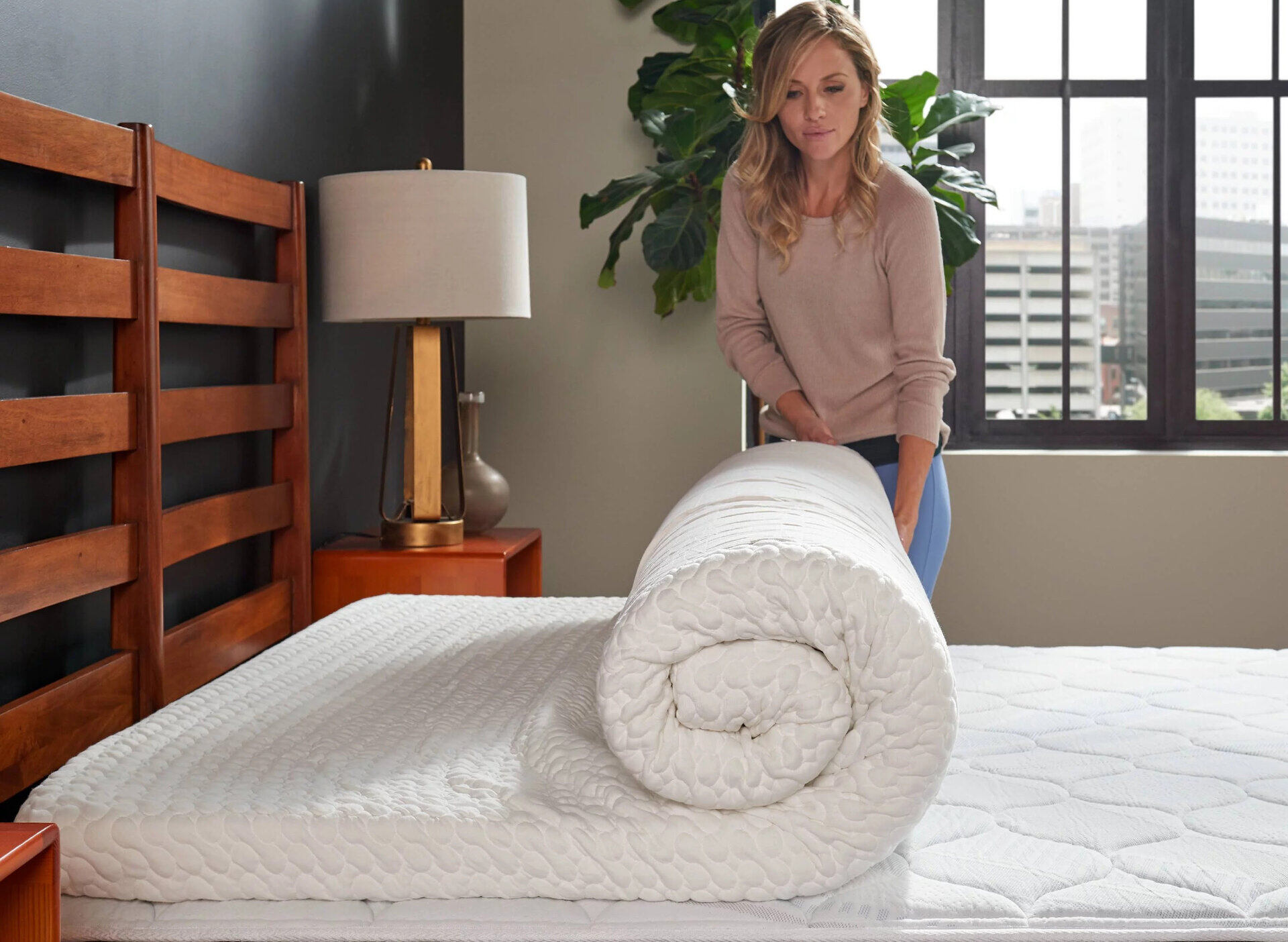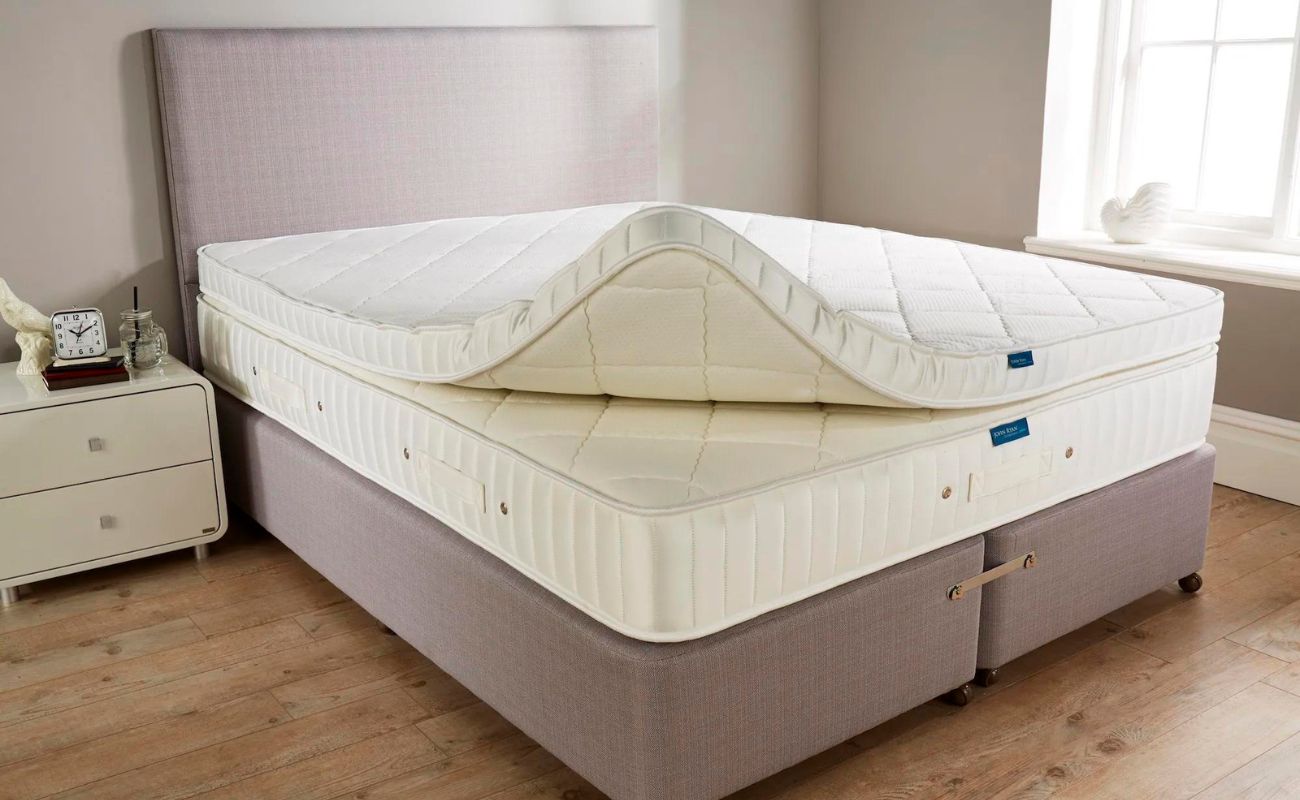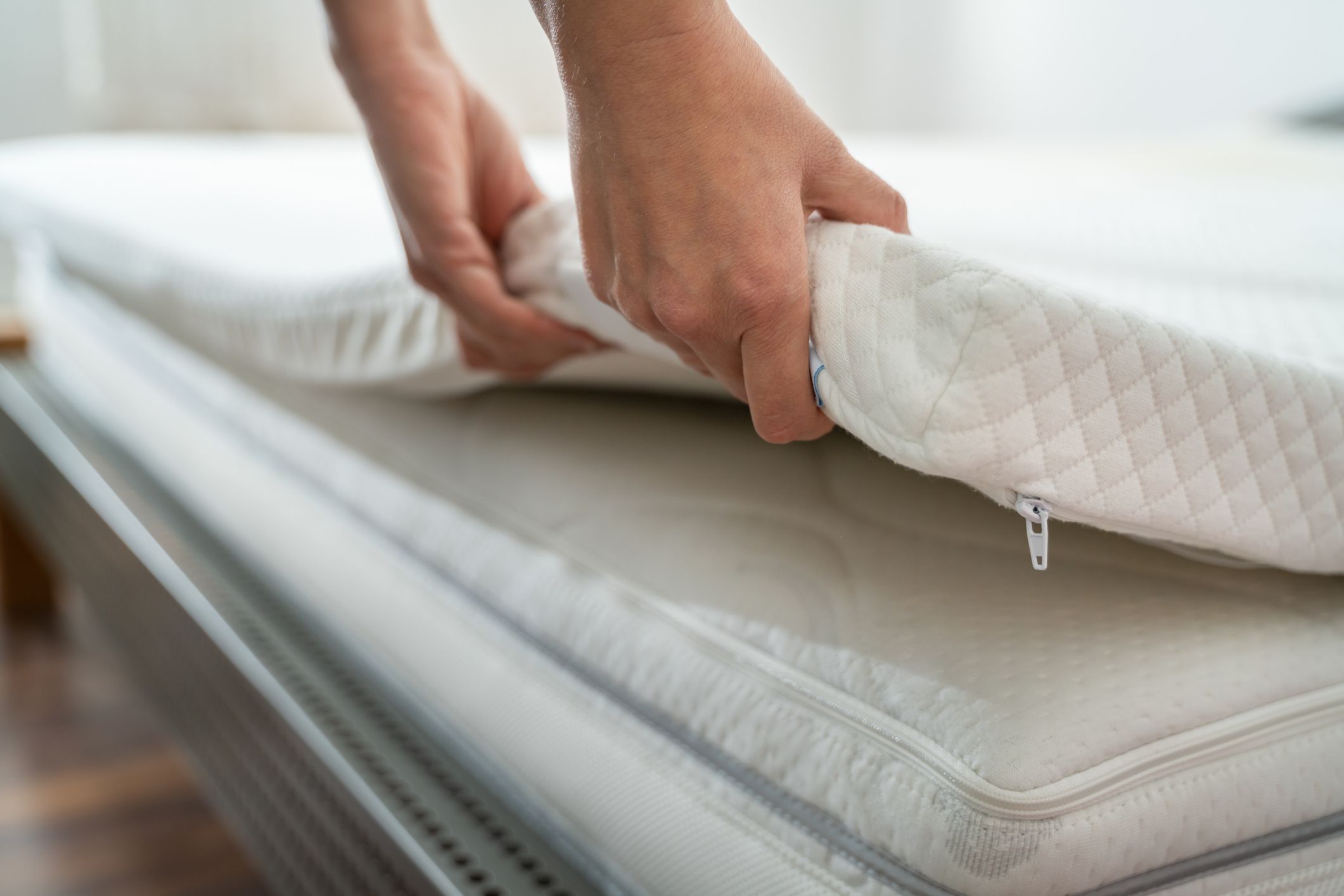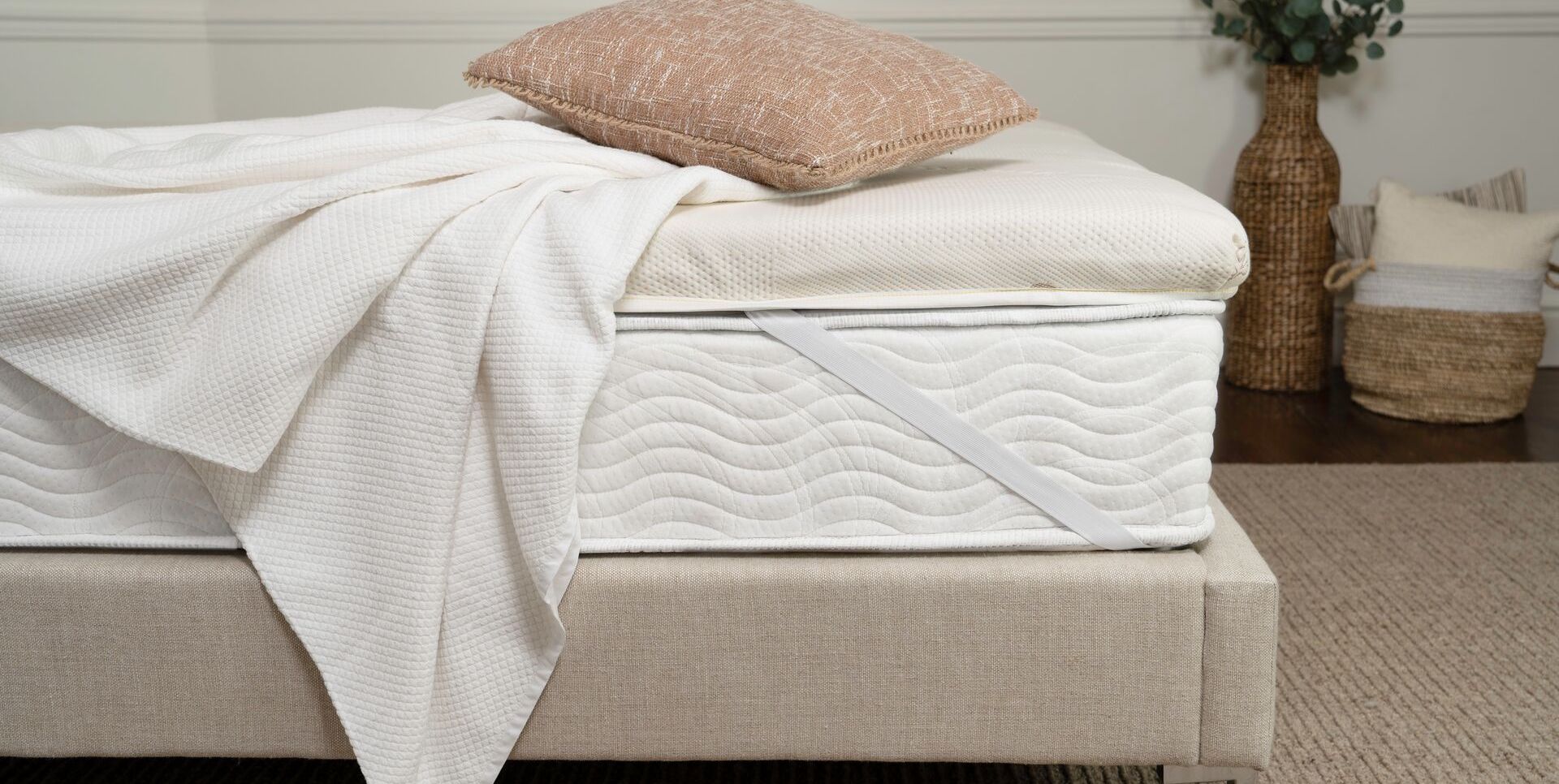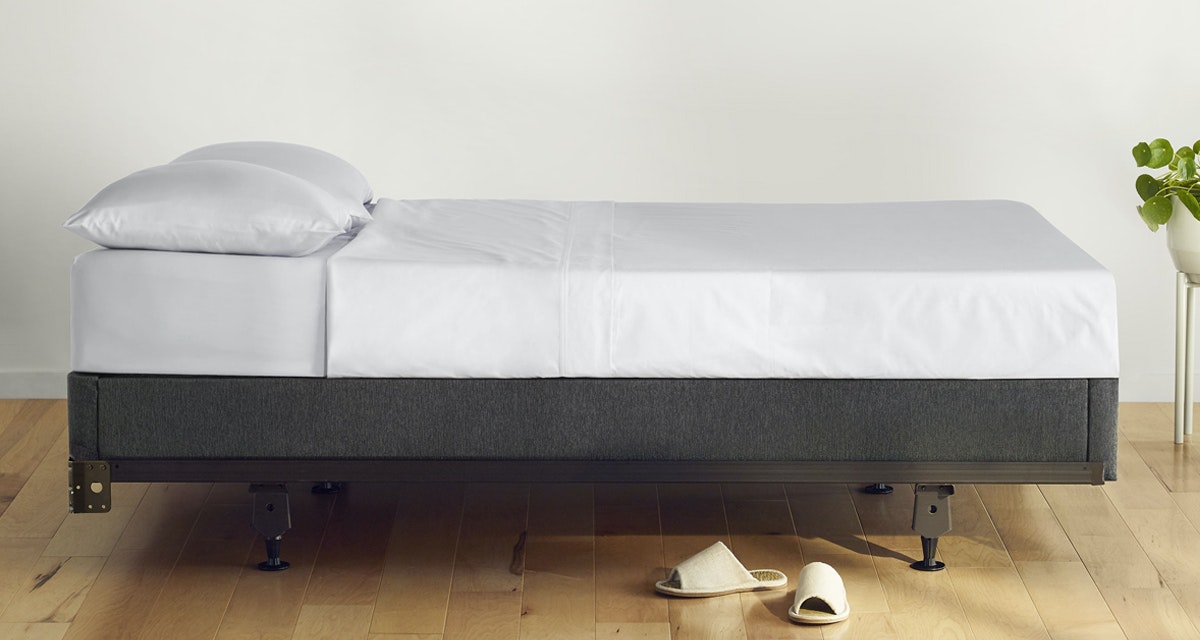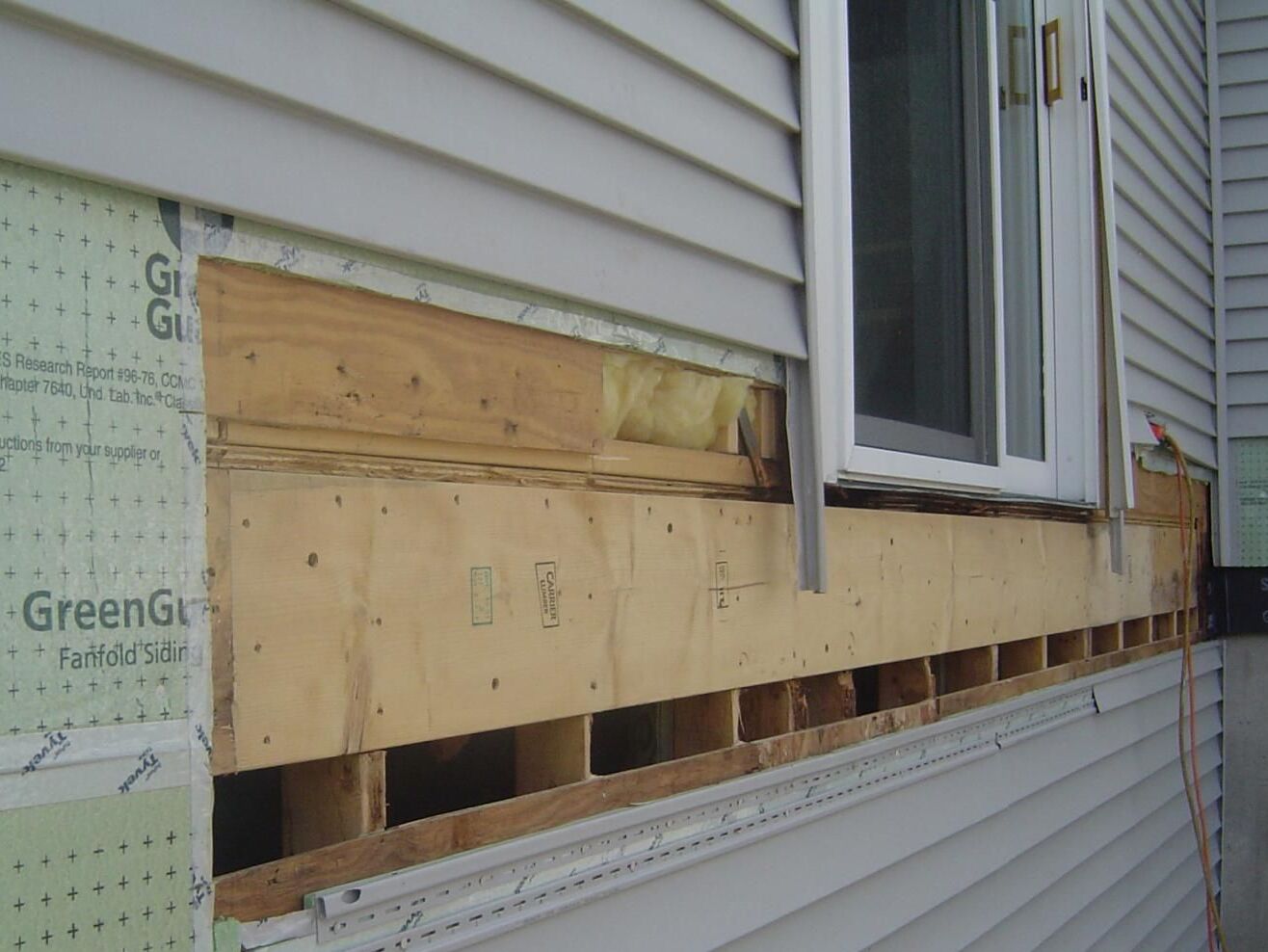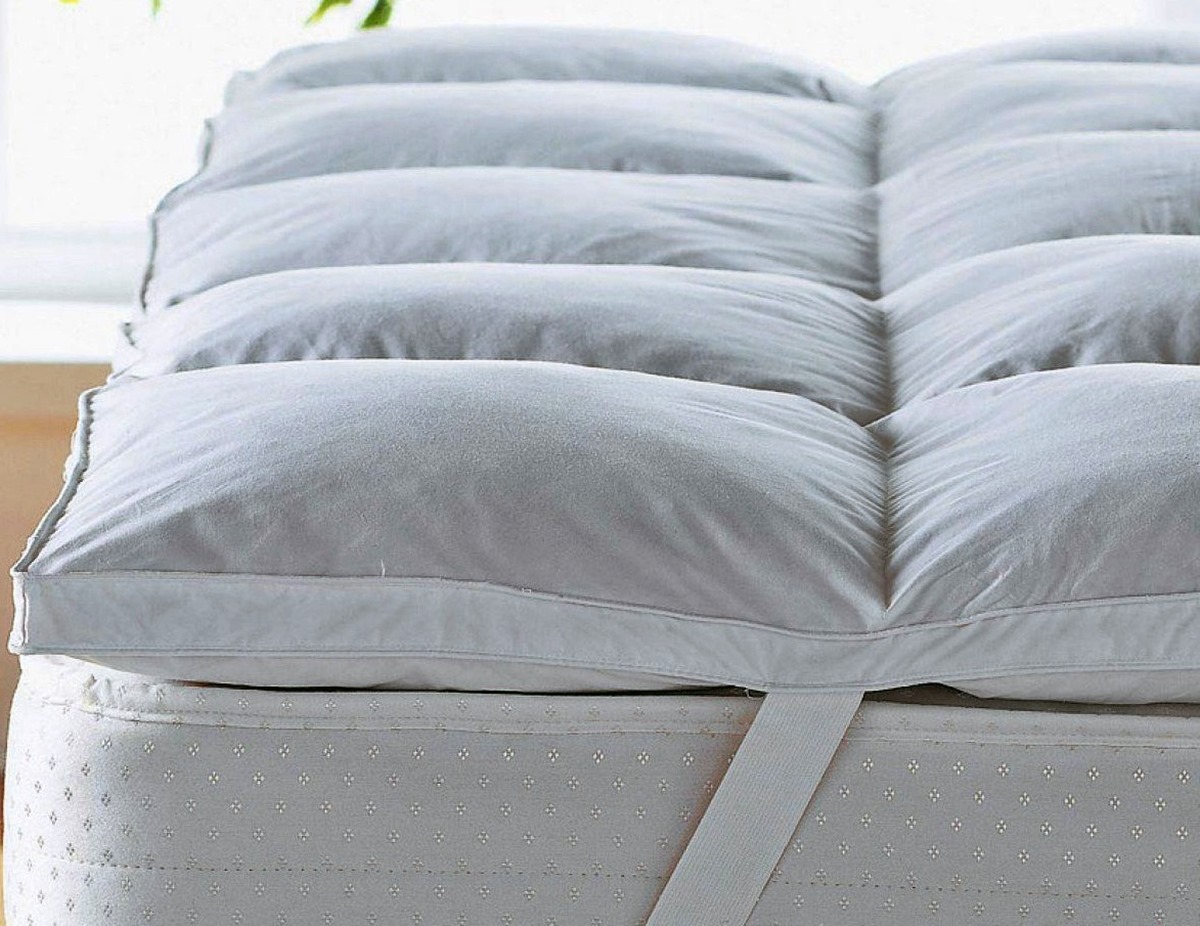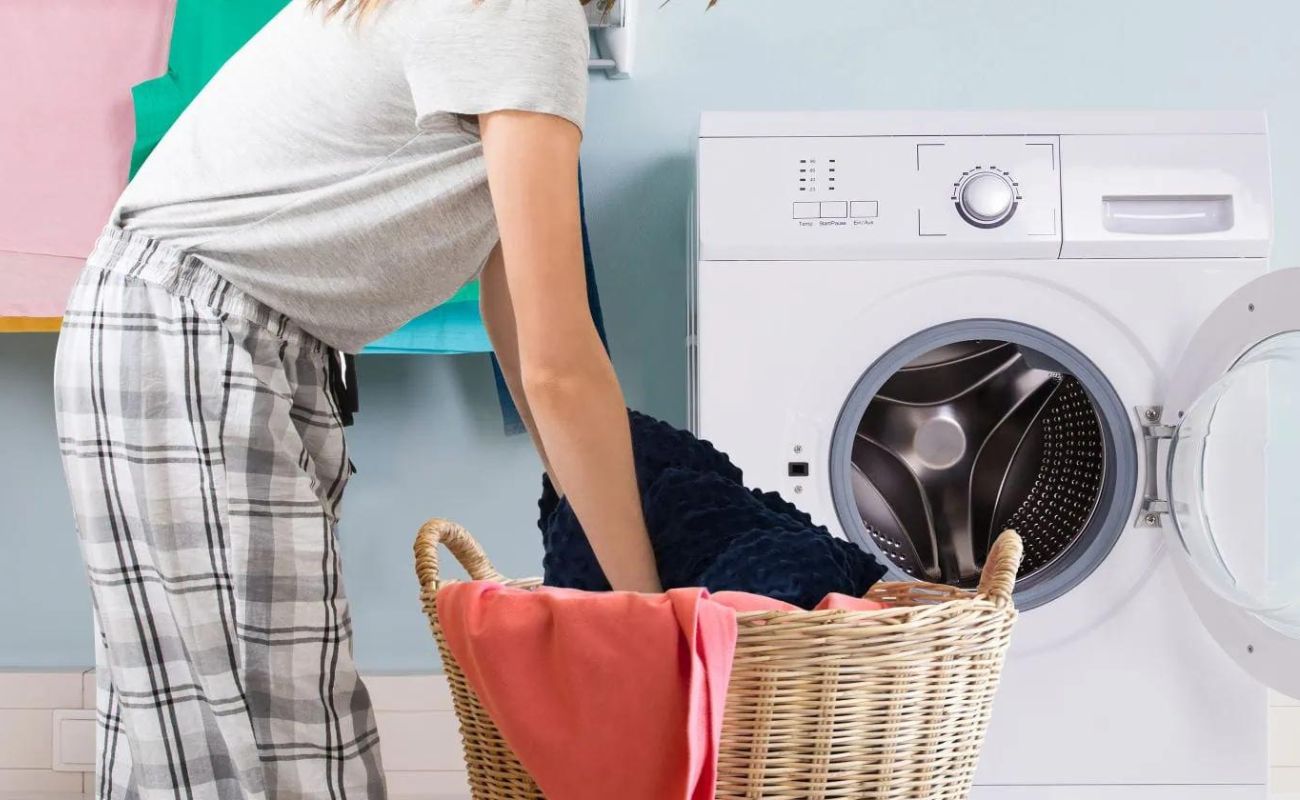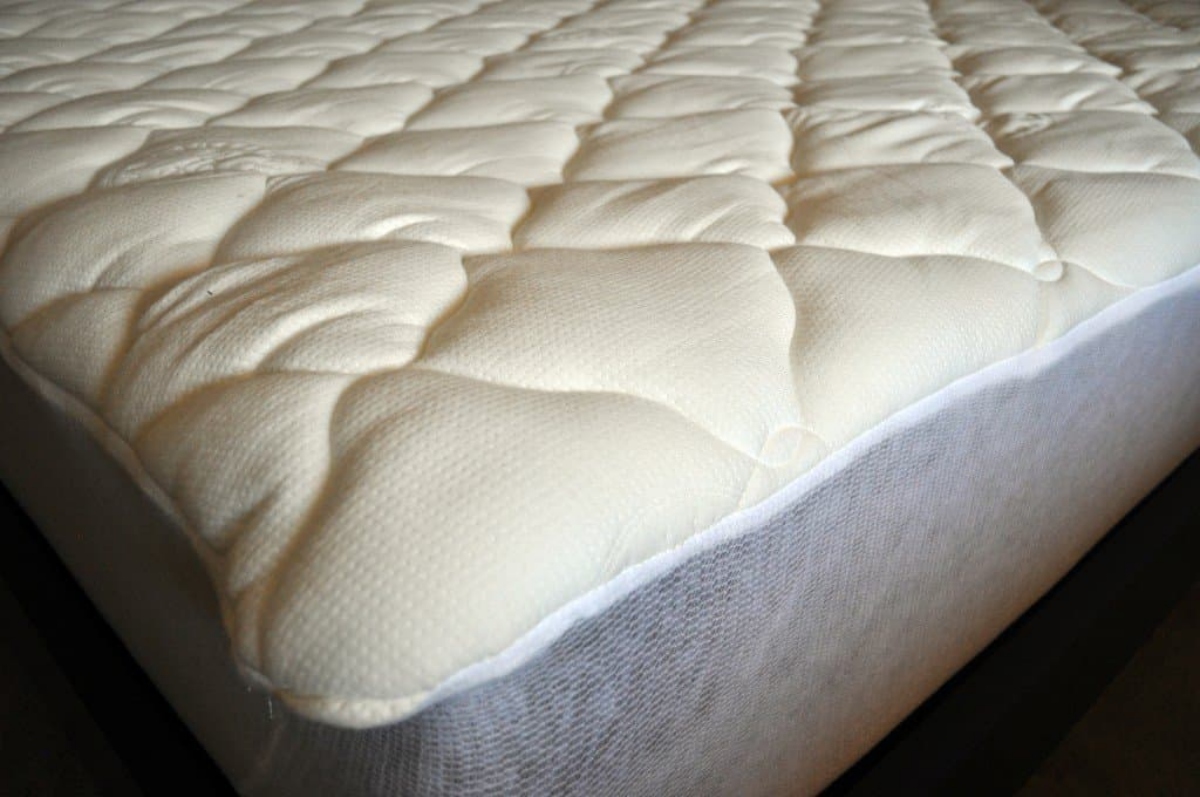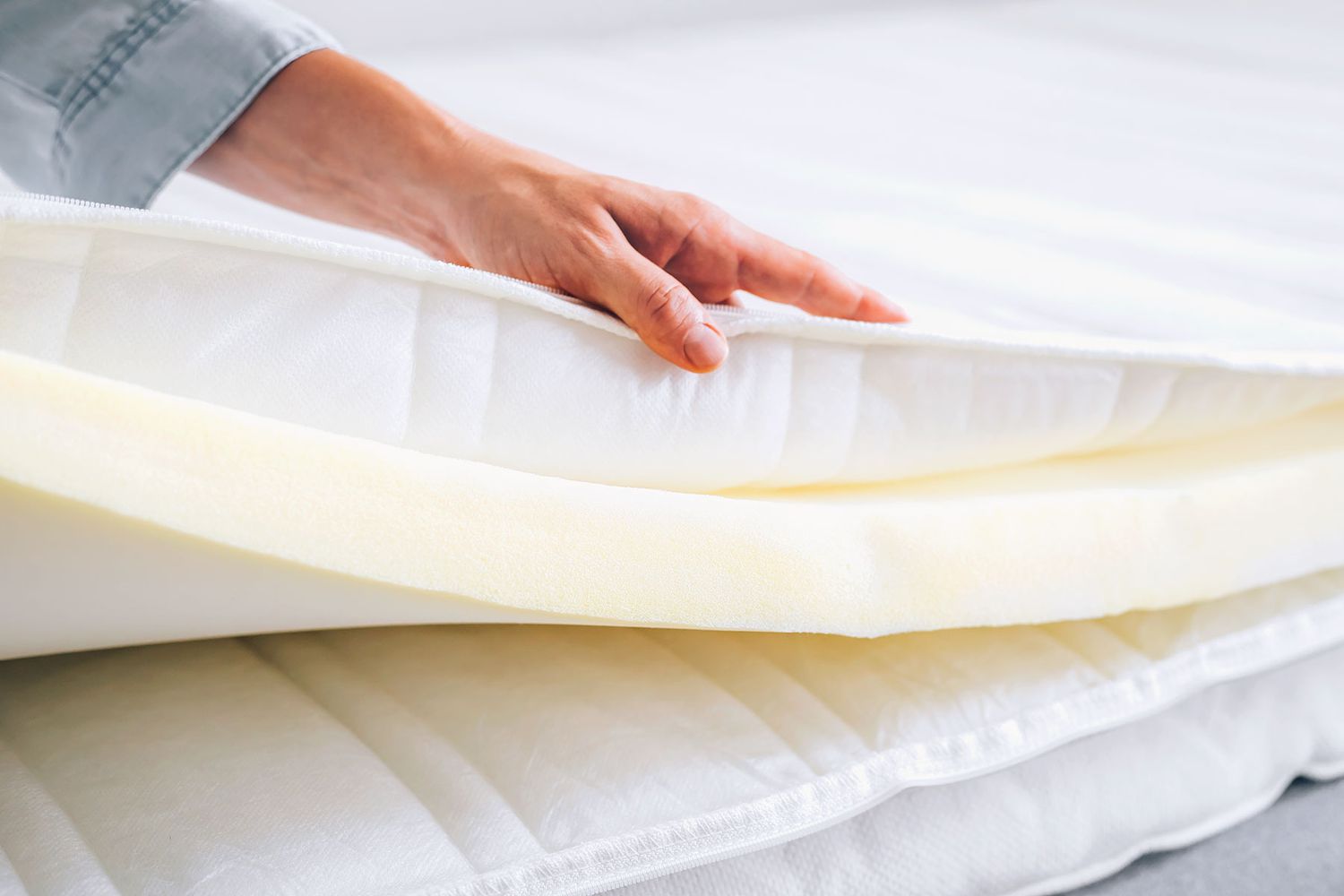Home>Furniture>Bedroom Furniture>Which Side Of The Mattress Pad Goes Up
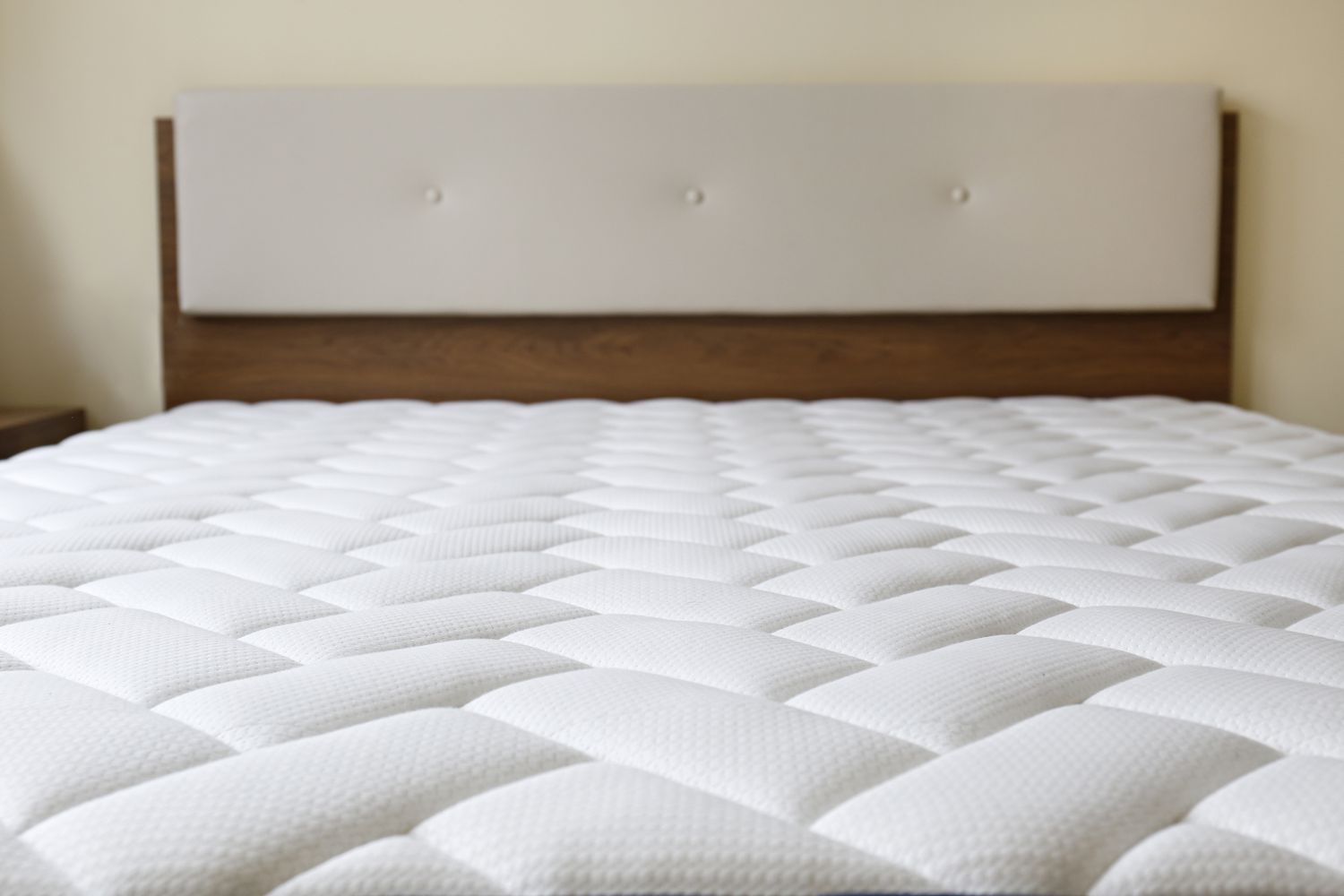

Bedroom Furniture
Which Side Of The Mattress Pad Goes Up
Modified: August 17, 2024
Discover the correct way to position your mattress pad in your bedroom furniture. Learn which side goes up for optimal comfort and support.
(Many of the links in this article redirect to a specific reviewed product. Your purchase of these products through affiliate links helps to generate commission for Storables.com, at no extra cost. Learn more)
Introduction
Welcome to the world of bedroom furniture, where every detail matters in creating the perfect sleeping environment. One essential item that often goes unnoticed is the mattress pad. While many people simply toss it onto their bed without much thought, understanding the importance of using a mattress pad correctly can greatly enhance your sleep experience.
A mattress pad is a protective cover that sits on top of your mattress, providing an extra layer of comfort and protection. It is designed to keep your mattress clean, reduce wear and tear, and improve the overall feel of your bed. However, did you know that there is a proper way to install a mattress pad and that it has specific sides? In this article, we will unravel the mystery of which side of the mattress pad goes up and explore the reasons why it matters.
By delving into the construction of mattress pads and discussing the top and bottom sides, you will gain a better understanding of how to properly use and install this crucial bedroom accessory. So, let’s dive in and uncover the secrets of mattress pad installation!
Key Takeaways:
- Proper installation of a mattress pad involves placing the luxurious top side facing up and securing the non-slip bottom side to the mattress, ensuring maximum comfort and protection for a restful sleep experience.
- Using a mattress pad correctly offers benefits such as enhanced mattress protection, improved comfort, temperature regulation, allergen protection, noise reduction, and easier maintenance, contributing to a healthier and more comfortable sleep environment.
Read more: Which Side Of A Mattress Topper Goes Up
Importance of Using a Mattress Pad
A mattress is a significant investment, and protecting it should be a top priority. That’s where a mattress pad comes into play. Using a mattress pad correctly offers several key benefits:
- Protection from spills and stains: Accidents happen, whether it’s a spilled drink or a pet mishap. A mattress pad acts as a barrier, preventing liquids from seeping into your mattress and potentially causing permanent damage.
- Increased mattress lifespan: By acting as a shield against dirt, dust, and natural body oils, a mattress pad helps maintain the cleanliness of your mattress. This can extend its lifespan and keep it in better condition for longer.
- Enhanced comfort: Depending on the material, a mattress pad can add an extra layer of cushioning and softness to your bed. This can be particularly beneficial if your mattress feels too firm or if you prefer a plusher sleeping surface.
- Temperature regulation: Some mattress pads are designed with moisture-wicking properties, allowing for better airflow and temperature regulation. This can be ideal for those who tend to sleep hot or live in warmer climates.
- Allergy protection: If you suffer from allergies or asthma, a mattress pad can help minimize your exposure to common triggers like dust mites. Look for hypoallergenic mattress pads that are resistant to allergens.
- Noise reduction: If your mattress tends to creak or squeak, a mattress pad can help dampen the noise, making for a quieter and more peaceful sleep environment.
Now that we understand the importance of using a mattress pad, it’s time to delve deeper into its construction and uncover the mystery of which side goes up.
Understanding Mattress Pad Construction
Before we determine which side of the mattress pad goes up, let’s take a closer look at how these essential bedding accessories are constructed.
Most mattress pads consist of three layers: the top layer, the middle layer, and the bottom layer. The top layer is the one that comes into direct contact with your body, while the bottom layer sits directly on top of your mattress. The middle layer provides additional cushioning and support.
The top layer of a mattress pad is often made of a soft and breathable fabric. Common materials include cotton, polyester, or a blend of both. Some premium mattress pads may feature bamboo or cooling technologies to regulate temperature and keep you comfortable throughout the night.
The middle layer of the mattress pad is typically made of a filling material. This can vary from polyester fiberfill to down feathers or a memory foam layer. The purpose of this layer is to provide extra cushioning and support, helping to alleviate pressure points and enhance overall comfort.
Lastly, the bottom layer of the mattress pad is designed to anchor the pad securely to your mattress. It is usually made of a non-slip material, such as polyester or a rubberized grip, to prevent the pad from shifting or sliding during sleep.
Now that we have a grasp of the basic construction of a mattress pad, let’s explore the top and bottom sides in more detail to determine which side goes up.
The Top Side of the Mattress Pad
When it comes to the top side of a mattress pad, the key factor to consider is comfort. The top side is the side that comes in direct contact with your body, so it needs to provide a soft and pleasant sleeping surface.
In most cases, the top side of a mattress pad will have a smooth and luxurious texture. It is often made of a soft fabric, such as cotton or a blend of materials, to ensure a comfortable and cozy feel against your skin.
Additionally, the top side of the mattress pad may also feature quilting or stitching patterns. These patterns not only add an aesthetic touch but also help keep the filling material evenly distributed, preventing it from shifting or clumping with use.
Depending on the design and brand of the mattress pad, you may find additional features on the top side. Some mattress pads may have cooling properties to regulate temperature and prevent night sweats. Others may be infused with hypoallergenic materials to reduce the risk of allergic reactions.
Ultimately, the top side of the mattress pad is meant to provide you with a comfortable and enjoyable sleep experience. So, when placing the mattress pad on your bed, ensure that the soft and luxurious top side is facing up, allowing you to reap the full benefits of its design and construction.
The quilted or padded side of the mattress pad should go up, providing a layer of comfort and protection for your mattress. The smooth, non-padded side should be facing down against the mattress.
The Bottom Side of the Mattress Pad
Now that we have discussed the importance and characteristics of the top side of a mattress pad, it’s time to turn our attention to the bottom side. While this side may seem less significant, it plays a crucial role in ensuring the proper installation and functionality of the mattress pad.
The bottom side of a mattress pad is specifically designed to secure the pad to your mattress. It typically features a non-slip material or a rubberized grip to prevent the pad from shifting or sliding during sleep.
When examining the bottom side, you may notice a distinct texture or pattern that enhances its grip on the mattress. This textured pattern helps to create friction between the pad and the mattress surface, keeping it securely in place even with movement during sleep.
In addition to the non-slip feature, the bottom side of the mattress pad may also have elasticized corners or straps. These provide an extra layer of security, allowing you to secure the pad tightly to the corners of your mattress. This ensures that the pad stays in place, even if you frequently toss and turn during the night.
It is important to make sure that the bottom side of the mattress pad is facing down when placing it on your bed. This ensures that the grip and securing mechanisms are properly engaged, providing maximum stability and preventing the pad from moving around while you sleep.
By properly aligning the top and bottom sides of the mattress pad, you can ensure optimal performance and functionality, creating a comfortable sleep surface that stays securely in place throughout the night.
Read more: Which Side Of A Memory Foam Topper Goes Up
Proper Installation of the Mattress Pad
Now that we understand the different sides of a mattress pad and their respective functions, let’s discuss the proper installation process to ensure that your mattress pad is correctly in place.
1. Prepare your mattress: Start by removing any existing bedding, such as sheets or mattress protectors, from your mattress. This will provide a clean and fresh surface for the installation of the mattress pad.
2. Identify the top and bottom sides: Take a moment to determine the top and bottom sides of your mattress pad. The top side should have a luxurious and comfortable texture, while the bottom side may feature a non-slip material or grip.
3. Place the mattress pad on your mattress: Carefully position the mattress pad on top of your mattress with the top side facing up. Ensure that the pad is centered and aligned with the edges of the mattress.
4. Secure the mattress pad: If your mattress pad has elasticized corners or straps, stretch them over the corners of your mattress to secure the pad in place. This will help prevent the pad from shifting or sliding during sleep.
5. Smooth out any wrinkles: Smooth out any wrinkles or folds on the mattress pad to create a flat and even surface. This will ensure a comfortable and seamless feel when you lay down on your bed.
Once you have completed these steps, your mattress pad should be installed correctly and ready for use. Remember to periodically check the pad’s placement and adjust if necessary, especially after washing your bedding.
By following these installation guidelines, you can ensure that your mattress pad functions optimally, providing the essential benefits of protection, comfort, and support throughout the lifespan of your mattress.
Benefits of Using a Mattress Pad Correctly
Using a mattress pad correctly offers a plethora of benefits, making it a valuable addition to your bedding ensemble. Here are some of the advantages you can enjoy by using a mattress pad properly:
- Enhanced mattress protection: By using a mattress pad, you create a protective barrier between your body and the mattress. This helps shield the mattress from spills, stains, dust, and sweat, preventing potential damage and extending its lifespan.
- Improved comfort: A mattress pad adds an extra layer of cushioning and softness to your bed. It can help alleviate pressure points, provide a more comfortable sleeping surface, and contribute to a restful night’s sleep.
- Temperature regulation: Some mattress pads are designed with moisture-wicking or cooling technologies. These features help regulate your body temperature throughout the night, preventing overheating and promoting a more comfortable sleep environment.
- Allergen protection: For those with allergies or asthma, a mattress pad can act as a barrier against common allergens like dust mites. Opting for a hypoallergenic mattress pad can reduce the risk of allergic reactions, allowing you to breathe easier while you sleep.
- Noise reduction: If your mattress tends to make noises, a mattress pad can help dampen sound transfer, reducing unwanted creaks and squeaks. This promotes a quieter sleeping environment, ensuring minimal disruptions during your slumber.
- Easier maintenance: Washing a mattress pad is much simpler than cleaning an entire mattress. Mattress pads are typically machine washable, making it convenient to keep them fresh and clean. Regularly washing your mattress pad helps eliminate dust, sweat, and allergens, improving overall hygiene.
By using a mattress pad correctly, you not only protect your mattress investment but also enhance your overall sleep quality. The added cushioning, temperature regulation, and allergen protection contribute to a more comfortable and healthier sleep environment.
Remember to follow the manufacturer’s instructions for cleaning and maintaining your mattress pad to ensure its longevity and continued effectiveness. With proper care, your mattress pad will provide long-lasting comfort and protection, making it a valuable component of your bedroom setup.
Conclusion
A mattress pad may seem like a small and insignificant addition to your bedding, but understanding its proper usage and installation can greatly enhance your sleep experience. By following the guidelines outlined in this article, you can maximize the benefits of using a mattress pad and ensure its long-lasting performance.
Remember that the top side of the mattress pad, with its luxurious texture and comfortable feel, should always face up. This allows you to fully enjoy the added cushioning and temperature-regulating properties. The bottom side, designed with non-slip materials or grip, should be securely anchored to your mattress to prevent shifting during sleep.
Using a mattress pad correctly offers numerous advantages, including increased mattress protection, improved comfort, temperature regulation, allergen protection, noise reduction, and easier maintenance. By creating a clean and comfortable sleep environment, your mattress pad serves as a valuable accessory that extends the life of your mattress and enhances your sleep quality.
When it comes to choosing a mattress pad, consider your personal preferences and specific needs. Look for high-quality materials, hypoallergenic options, and features that align with your desired sleep experience. Additionally, be sure to follow the manufacturer’s care instructions to maintain the integrity and functionality of your mattress pad.
In conclusion, utilizing a mattress pad correctly not only protects your mattress investment but also enhances your overall sleep quality. By adding an extra layer of comfort, temperature regulation, and allergen protection, a mattress pad can transform your bed into a cozy and inviting oasis.
So, make the most of your mattress pad and enjoy a restful night’s sleep, knowing that you’ve taken the necessary steps for optimal usage and installation.
Frequently Asked Questions about Which Side Of The Mattress Pad Goes Up
Was this page helpful?
At Storables.com, we guarantee accurate and reliable information. Our content, validated by Expert Board Contributors, is crafted following stringent Editorial Policies. We're committed to providing you with well-researched, expert-backed insights for all your informational needs.
